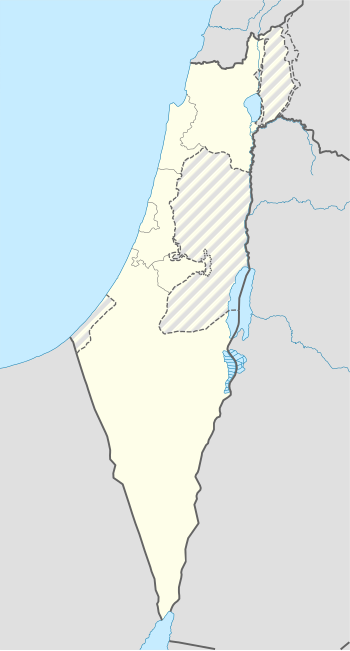
Back قائمة مواقع التراث العالمي في إسرائيل Arabic مواقع التراث العالمى فى اسرائيل ARZ İsraildəki ümumdünya irsi obyektlərinin siyahısı Azerbaijani Сьпіс аб’ектаў Сусьветнай спадчыны ЮНЭСКО ў Ізраілі BE-X-OLD Welterbe in Israel German Anexo:Patrimonio de la Humanidad en Israel Spanish فهرست میراث جهانی در اسرائیل Persian Liste du patrimoine mondial en Israël French אתרי מורשת עולמית בישראל HE Izrael világörökségi helyszínei Hungarian
The United Nations Educational, Scientific and Cultural Organization (UNESCO) World Heritage Sites are places of importance to cultural or natural heritage as described in the UNESCO World Heritage Convention, established in 1972.[1] Cultural heritage consists of monuments (such as architectural works, monumental sculptures, or inscriptions), groups of buildings, and sites (including archaeological sites). Natural heritage is defined as physical and biological formations, geological and physiographical formations (including habitats of threatened flora and fauna), and sites which are important from the point of view of scientific research, conservation or natural aesthetic.[2]
The State of Israel ratified the convention on 6 October 1999, making its cultural and natural sites eligible for inclusion on the list. The country has nine sites, all of which are cultural. The earliest inclusions were Masda and the Old City of Acre in 2001; the latest inclusion was the network of caves at Beit Guvrin-Maresha National Park in 2014. In addition, the Israeli cabinet has put 18 sites on its tentative list, meaning they intend to nominate them as World Heritage Sites sometime in the future. 14 of them were put in the year 2000. Unlike the official list, the tentative list contains several sites of natural and mixed heritage.[3]
Due to its conflict with the State of Palestine, Israel has a strained relationship with UNESCO, described by Palestinian journalist Ramzy Baroud as "an existential battle".[4] UNESCO recognizes Palestine's ownership of East Jerusalem in 2011, despite assigning no countries to the Old City of Jerusalem and its Walls site.[5][6] On that same year, Palestine ratified the convention, a decision opposed by Israel who left UNESCO in 2019 claiming that the organization fails to recognize its cultural connection with Jerusalem, though it still remains in the convention. The inclusion of Tell es-Sultan in ancient Jericho as a Palestinian site was criticized by Israel's Foreign Ministry as indicating "Palestinians' cynical use of UNESCO and politicization of [it]" and wishes to revert the "distorted decisions".[7] Israeli heritage organization Emek Shaveh noting that the part of Jericho claimed by Israel is not the one listed.[8]
- ^ "The World Heritage Convention". UNESCO World Heritage Centre. Archived from the original on 27 August 2016. Retrieved 21 September 2010.
- ^ "Convention Concerning the Protection of the World Cultural and Natural Heritage". UNESCO World Heritage Centre. Archived from the original on 1 February 2021. Retrieved 3 February 2021.
- ^ Centre, UNESCO World Heritage. "Israel - UNESCO World Heritage Convention". UNESCO World Heritage Centre. Retrieved 2023-10-19.
- ^ Baroud, Ramzy (25 September 2023). "Ghosts of the past: For Israel, war on UNESCO is an existential battle". Middle East Monitor. Retrieved 19 October 2023.
- ^ "Old City of Jerusalem and its Walls", UNESCO World Heritage List website, accessed 13 November 2017.
- ^ UNESCO press release, 15 July 2011, accessed 13 November 2017.
- ^ AP and ToI Staff. "UNESCO votes to list ruins near ancient Jericho as a World Heritage Site in Palestine". www.timesofisrael.com. Retrieved 2023-10-19.
- ^ "Unesco's addition of West Bank archaeological site to World Heritage list fans Israel-Palestine tensions". The Art Newspaper - International art news and events. 2023-09-19. Retrieved 2023-10-19.
